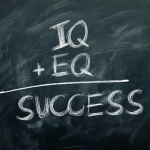The Transformative Power of Resilience: Workplace Case Studies
Resilience is a quality that resonates with everyone, yet is often difficult to define in concrete terms. At its core, resilience is the ability to bounce back from challenges, adapt to changes, and continue pursuing goals despite setbacks. In a workplace context, resilience can lead to higher performance, improved job satisfaction, and a more cohesive work environment. This article explores the transformative power of resilience through various case studies and provides actionable steps for cultivating this essential quality in yourself and your organization.
The Importance of Resilience in the Workplace
The workplace is an arena where challenges abound. Economic shifts, organizational changes, and personal responsibilities can all weigh heavily on employees. A resilient workforce is one that can not only endure adversity but also thrive in the face of it. Organizations that prioritize resilience see increased engagement, innovation, and collaboration among their teams. This leads not just to individual growth but to a positive culture that can bolster an organization’s bottom line.
Case Study 1: Google’s Project Aristotle
Google embarked on a research initiative called Project Aristotle, aimed at understanding the key factors that contribute to effective team performance. Through their analysis, they discovered that psychological safety, a component of resilience, was vital for teams to innovate and collaborate effectively. When team members felt safe to take risks and express their thoughts without fearing negative consequences, the overall performance improved dramatically.
Action Step: Foster a culture of psychological safety in your team. Encourage open communication and create an environment where employees feel comfortable sharing ideas and voicing concerns. Conduct regular feedback sessions and make it clear that every voice matters.
Case Study 2: Johnson & Johnson’s Leadership During Crisis
During the 1982 Tylenol crisis, Johnson & Johnson faced a monumental challenge when cyanide-laced capsules led to seven fatalities. Rather than succumbing to fear, the leadership responded with transparency and a commitment to consumer safety. They coordinated a massive recall and ultimately developed tamper-proof packaging. The company’s resilience in handling the crisis not only salvaged its reputation but strengthened its brand loyalty.
Action Step: Establish a crisis management plan within your organization. Empower leaders to make decisions based on integrity and transparency. Regularly review and rehearse this plan to ensure everyone knows their roles when faced with unexpected challenges.
Case Study 3: Adobe’s Shift to a Growth Mindset
Adobe faced market pressure with the advancement of technology and consumer demand for cloud-based solutions. To respond, the company embraced a growth mindset—a critical aspect of resilience. They shifted from annual performance reviews to regular feedback and coaching sessions, encouraging employees to learn from failures and celebrate their achievements. This cultural transformation improved employee satisfaction and innovation across the company.
Action Step: Encourage a growth mindset in your own work environment. Implement regular feedback loops, training sessions, and professional development opportunities. Highlight stories of resilience and learning within your organization to inspire a similar attitude among your colleagues.
Case Study 4: Zappos and Employee Empowerment
Zappos has long been celebrated for its unique company culture, which emphasizes employee engagement and empowerment. During a recent economic downturn, instead of cutting jobs, the management at Zappos focused on retaining talent and increasing morale through various initiatives, such as promoting collective resilience and fostering teamwork. The outcome was a highly engaged workforce that confronted challenges with creativity and positivity.
Action Step: Create opportunities for team-building and collaboration. Organize workshops that focus on managing stress and enhancing resilience. Implement mentorship programs that build strong relationships among employees, fostering a sense of community within your organization.
Cultivating Resilience: A Personal Action Plan
Building resilience isn’t solely the responsibility of organizations—it’s an individual endeavor, too. Here are actionable steps you can take to cultivate resilience within yourself:
-
Develop Self-Awareness: Regularly take time for introspection. Understand your strengths and weaknesses and how they play into your approach to challenges.
-
Set Realistic Goals: Break down larger goals into manageable tasks. This will allow you to feel a sense of achievement along the way, increasing your motivation to persist.
-
Practice Mindfulness: Engage in mindfulness meditation or other practices that help you stay present. This will not only reduce stress but also enhance your focus on constructive responses to challenges.
-
Build a Support Network: Surround yourself with supportive friends, family, and colleagues. Share experiences and seek advice from others who have overcome adversity.
-
Embrace Failure as a Learning Opportunity: View setbacks as chances to learn rather than definitive endings. Analyze what went wrong and how you can improve moving forward.
-
Celebrate Small Wins: Acknowledge incremental progress, however small. Celebrating milestones boosts your morale and fuels your resilience for the long road ahead.
- Stay Flexible: Adaptability is key. The ability to pivot and embrace new tactics can make the difference in successfully navigating challenges.
Conclusion
Resilience is not simply a skill; it is a way of being that can transform both individual careers and organizational cultures. By studying the successes of renowned companies and implementing actionable steps, both organizations and individuals can harness the power of resilience to foster an environment where challenges are embraced as opportunities for growth. In doing so, we create workplaces filled with innovation, collaboration, and unwavering support.
As we strive for a resilient future, consider the words of the motivational speaker and author, Maya Angelou:
“Do the best you can until you know better. Then, when you know better, do better.”
For more insights and inspiration, feel free to follow Kevin on Instagram (@KSteineman) for ongoing motivation and guidance.
You might also like
More from Emotional Intelligence
Using Emotional Intelligence to Navigate Relationships: 10 Key Examples
Using Emotional Intelligence to Navigate Relationships: 10 Key Examples In a world increasingly defined by digital interactions, emotional intelligence (EI) has …
Top 5 Emotional Intelligence Exercises to Enhance Your Skills
Top 5 Emotional Intelligence Exercises to Enhance Your Skills Emotional intelligence (EI) is the ability to perceive, control, and evaluate emotions—not …
Emotional Intelligence: A Definition That Empowers Your Relationships
Emotional Intelligence: A Definition That Empowers Your Relationships In our fast-paced, digitally-driven world, the importance of emotional intelligence (EI) has grown …


































